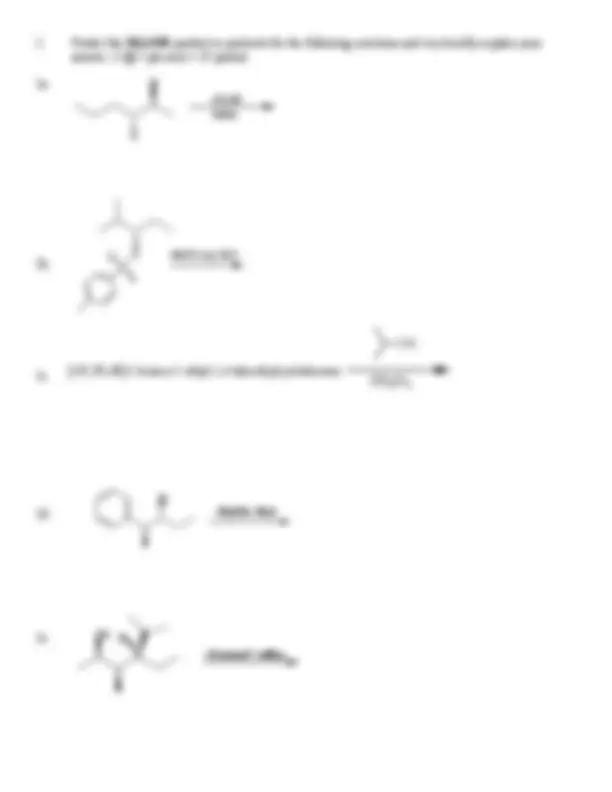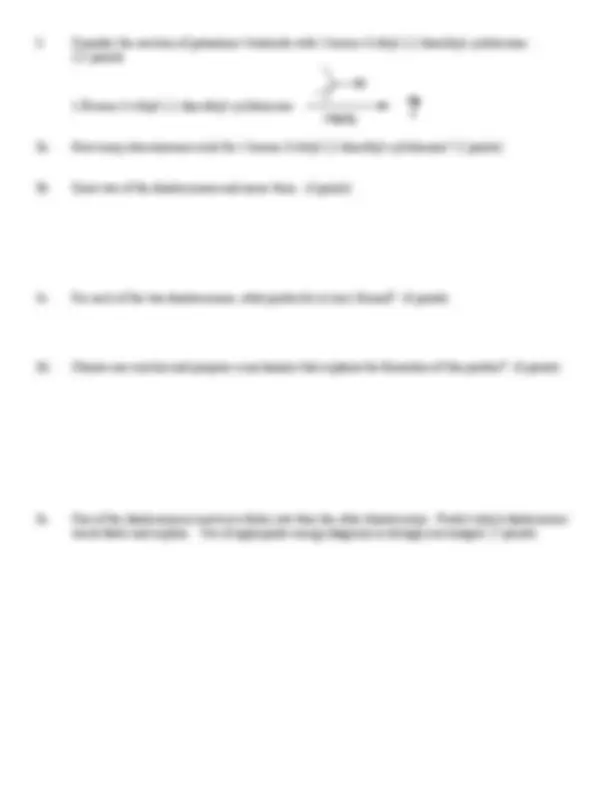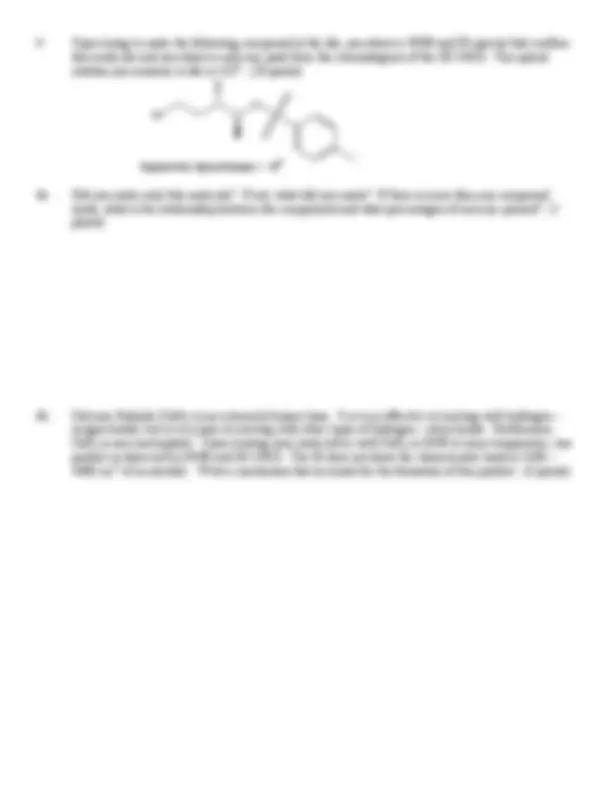





Study with the several resources on Docsity

Earn points by helping other students or get them with a premium plan


Prepare for your exams
Study with the several resources on Docsity

Earn points to download
Earn points by helping other students or get them with a premium plan
Community
Ask the community for help and clear up your study doubts
Discover the best universities in your country according to Docsity users
Free resources
Download our free guides on studying techniques, anxiety management strategies, and thesis advice from Docsity tutors
The final exam questions for an organic chemistry course, focusing on topics such as base identification, basicity ordering, nucleophiles, reaction prediction, and product identification. Students are required to identify the most basic atoms, arrange molecules in order of basicity, explain reasoning, differentiate bases and nucleophiles, and predict major products for various reactions.
Typology: Exams
1 / 6

This page cannot be seen from the preview
Don't miss anything!




Name:
Final Exam December 12, 2002
1a. What is a base? What factors are involved in making a base a strong base? (6 points)
1b. Circle the MOST basic atom(s) for each molecule. (3 points)
1c. Arrange the molecules in the order from most basic to least basic. (5 points)
Most Basic ____ > ____ > ____ > ____ > ____ Least Basic
1d. Briefly explain your reasoning behind the ordering of the molecules. Include a discussion of why the characteristics for each specific molecule help us understand the basicity for EACH molecule. Discussing them in order may be appropriate. (2 pts for each molecule = 10 points)
O
H 3 C O
N O
O
N
O
1e. Briefly explain what the difference is between a base and a nucleophile? (5 pts)
1f. Which of the above molecules are also nucleophiles? Explain very briefly. (4 points)
1g. Predict the product and the reaction equilibrium constant for the following reaction of glutamic acid (a naturally occurring amino acid) with 1 equivalent of sodium hydroxide (7 points)
H 3 N OH
O
HO O
pKa = 2.
pKa = 4.
pKa = 9.
1 eq of NaOH (in H 2 O)
pKa of H 2 O = 15.
pKa = 25
pKa = 22
OK
3a. How many stereoisomers exist for 1-bromo-3-ethyl-2,2-dimethyl cyclohexane? (2 points)
3b. Draw two of the diastereomers and name them. (4 points)
3c. For each of the two diastereomers, what product(s) is (are) formed? (6 points)
3d. Choose one reaction and propose a mechanism that explains the formation of this product? (6 points)
3e. One of the diastereomers reacts at a faster rate than the other diastereomer. Predict which diastereomer reacts faster and explain. Use of appropriate energy diagrams is strongly encouraged. (7 points)
4a. Did you make only this molecule? If not, what did you make? If there is more than one compound made, what is the relationship between the components and what percentages of each are present? ( points)
4b. Calcium Hydride (CaH 2 ) is an extremely bizarre base. It is very effective at reacting with hydrogen – oxygen bonds, but is very poor at reacting with other types of hydrogen – atom bonds. Furthermore, CaH 2 is non-nucleophilic. Upon treating your molecule(s) with CaH 2 in DMF at room temperature, one product is observed by NMR and GC-MSD. The IR does not show the characteristic band at 3200 – 3400 cm-1^ of an alcohol. Write a mechanism that accounts for the formation of this product. (6 points)
HO
O S
O
O
Reported Pure Optical Rotation = - 46